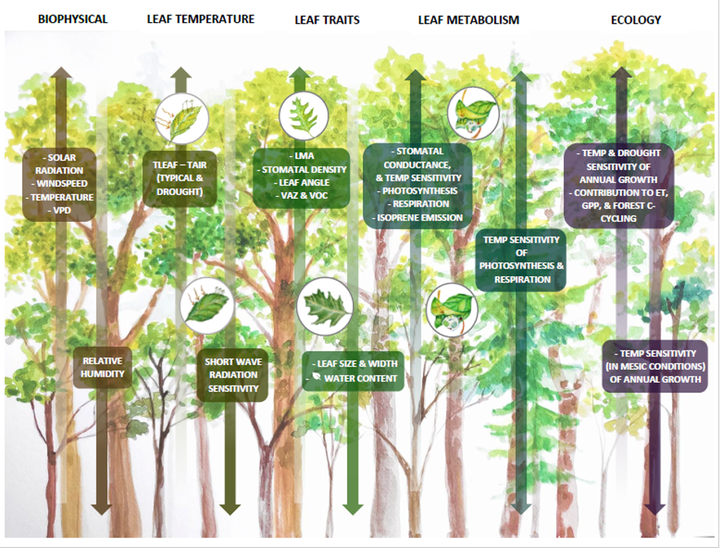Thermal sensitivity across forest vertical profiles: patterns, mechanisms, and ecological implications (accepted)
 Overview of topics covered in the paper, as well-illustrated by the first author, Nidhi Vinod
Overview of topics covered in the paper, as well-illustrated by the first author, Nidhi VinodAbstract
Rising temperatures are profoundly influencing forests on many scales with potentially strong variation vertically across forest strata. Using published research and new analyses, we evaluate how environmental conditions, leaf temperatures, and foliar traits and metabolism vary across vertical gradients, shaping whole-tree ecology and ecosystem function. In forests with dense canopies, canopy leaves are exposed to higher solar radiation and evaporative demand than understory leaves, and can experience elevated leaf temperature ($T_{leaf}$), particularly when transpirational cooling is curtailed by limited stomatal conductance. However, foliar traits that also vary strongly across height or light gradients can partially mitigate the elevation of Tleaf in the upper canopy. Leaf metabolism generally increases with height across the vertical gradient, and tall trees have higher absolute metabolic capacity and growth at both individual and ecosystem levels. Yet, differences in thermal sensitivity and damage thresholds across the gradient are modest. Under climate warming and increased drought, larger trees can face disproportionate stress, yet understory trees have fewer cooling mechanisms and thus may be impacted the most under hot, humid conditions, or when the buffering provided by large trees is lost.